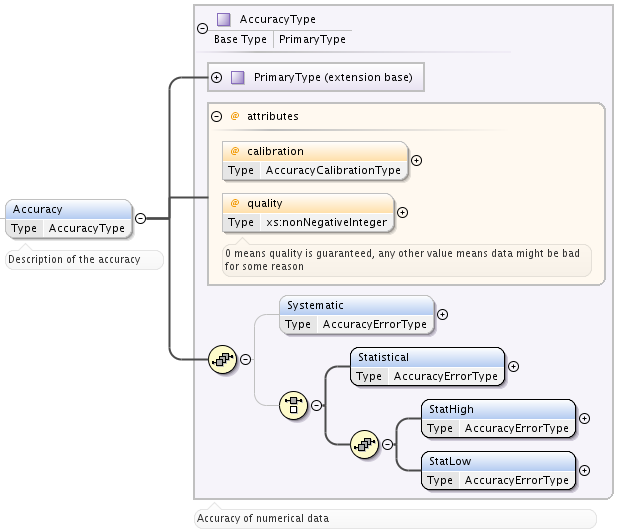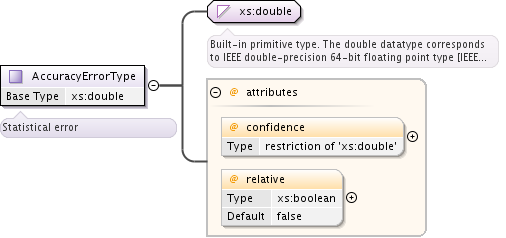

For the sake of properly defining numerical data accuracy, new AccuracyType was been introduced, that is used now in the Accuracy element of DataType and DataFuncType.
Accuracy description was been inspired by the one in IVOA Spectral Data Model v. 1.03

AccuracyType, extending PrimaryType allows to describe quality of data and has the following attributes and elements:
Optional calibration attribute that describes the kind of reference frame for data. Possible values are:
- absolute indicates that the values in the data are expected to be correct within the given uncertainty
- relative indicates that although an unknown systematic error is present, the ratio and difference of any two values originating from the same source will be correct.
- normalized indicates that the values, originating from this source, have been divided by a certain reference quantity. In this case units field of ValueType should be ‘unitless’
- uncalibrated indicates that not only an unknown systematic error is present in data, originating from that source, but also some unspecified value-dependant error. Thus, for example, for transitions frequencies only the order of transitions is guaranteed, neither frequencies, nor their difference/ratio are accurate.
Optional quality attribute of integer type that may be used for distinguishing quality-assessed data. Zero value means data, accurate within their errors, other values means that there were some problems with data.
Optional Systematic element of type AccuracyErrorType for systematic errors
Optional Statistical element of type AccuracyErrorType for total statistical error, i.e. upper/lower range are equal.
Optional StatHigh and StatLow elements group may be specified instead of single Statistical element to indicate statistical errors in case when upper and lower error ranges are not equal.

AccuracyErrorType is an extension of xs:double type, adding two attributes:
- confidence of type xs:double, with valid ranges from 0 to 1, indicating confidence level for which this accuracy is calculated. Ususal values would be like 0.95 or 0.99.
- relative of type xs:boolean, indicating whether this accuracy value is absolute(false) or relative(true). By default, accuracy should be treated as absolute.